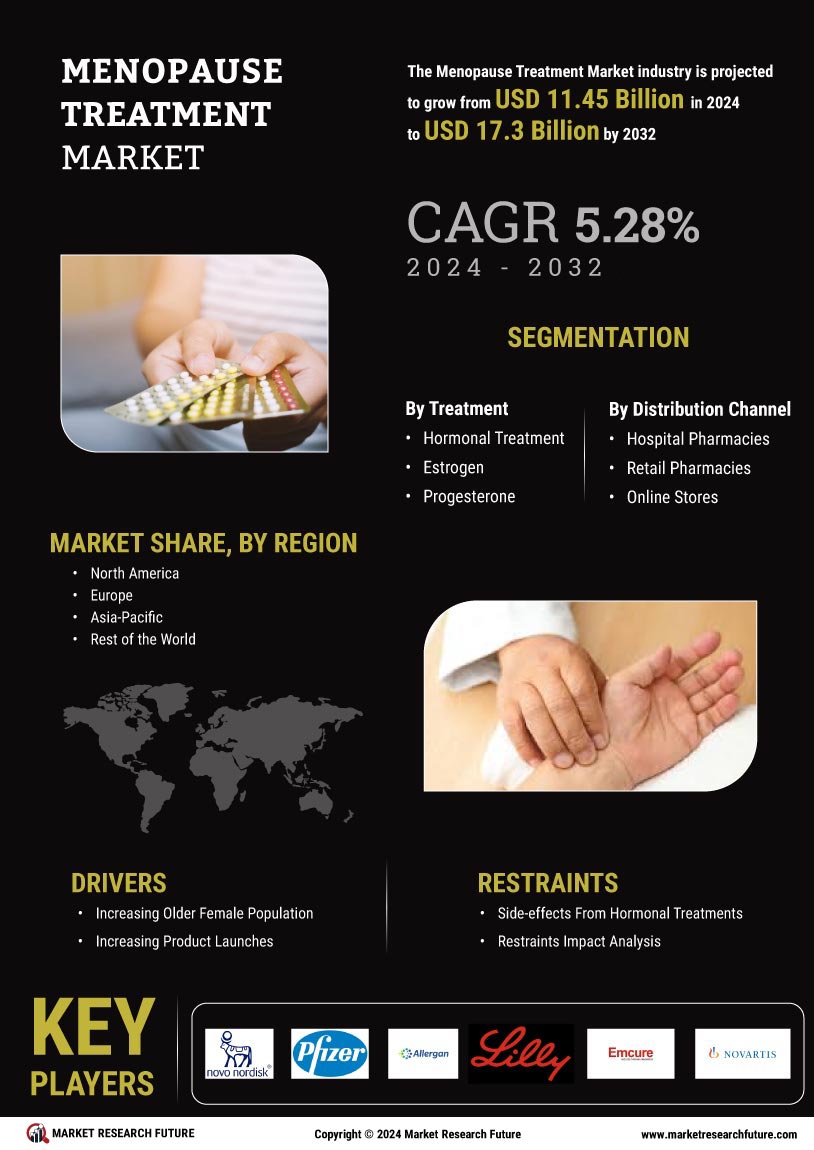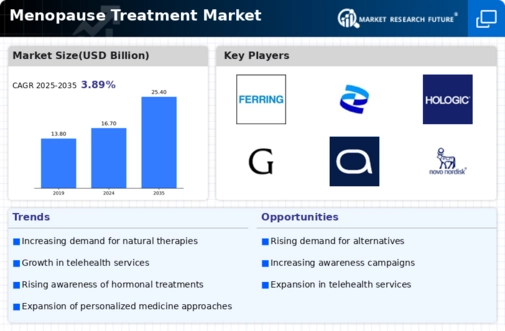Market Growth Projections
The Global Menopause Treatment Market Industry is projected to experience substantial growth in the coming years. By 2024, the market is expected to reach 16.7 USD Billion, with further growth anticipated to 25.4 USD Billion by 2035. This trajectory indicates a robust demand for menopause treatments, driven by factors such as an aging population and increased awareness. The compound annual growth rate (CAGR) of 3.89% from 2025 to 2035 suggests a steady expansion of the market, reflecting the ongoing need for effective solutions to manage menopause symptoms. This growth presents opportunities for stakeholders in the healthcare sector.
Increasing Aging Population
The Global Menopause Treatment Market Industry is experiencing growth due to the increasing aging population. As women age, they enter menopause, which typically occurs between the ages of 45 and 55. The World Health Organization indicates that the global population aged 60 years and older is projected to reach 2.1 billion by 2050. This demographic shift suggests a rising demand for menopause treatments, as more women seek relief from symptoms associated with menopause. The market is expected to reach 16.7 USD Billion in 2024, highlighting the urgent need for effective treatment options tailored to this growing population.
Rising Awareness and Education
There is a notable increase in awareness and education regarding menopause and its treatment options, which is positively influencing the Global Menopause Treatment Market Industry. Health organizations and advocacy groups are actively promoting information about menopause, its symptoms, and available treatments. This heightened awareness encourages women to seek medical advice and explore treatment options, thereby driving market growth. As educational initiatives expand, more women are likely to engage with healthcare providers, leading to an anticipated market value of 25.4 USD Billion by 2035. This trend underscores the importance of informed decision-making in managing menopause.
Advancements in Treatment Options
Innovations in menopause treatment options are significantly impacting the Global Menopause Treatment Market Industry. Pharmaceutical companies are developing new therapies, including hormone replacement therapy and non-hormonal alternatives, to address the diverse needs of women experiencing menopause. These advancements not only enhance the efficacy of treatments but also improve safety profiles, making them more appealing to patients. The introduction of personalized medicine approaches further tailors treatments to individual needs. As a result, the market is projected to grow at a CAGR of 3.89% from 2025 to 2035, reflecting the ongoing commitment to improving menopause care.
Increasing Focus on Women's Health
The Global Menopause Treatment Market Industry is benefiting from an increasing focus on women's health issues. Governments and health organizations are recognizing the importance of addressing menopause as a critical aspect of women's health. Initiatives aimed at improving healthcare access and quality for women are gaining traction, leading to enhanced support for menopause-related treatments. This focus is likely to result in increased funding for research and development of menopause therapies. As awareness and resources grow, the market is expected to expand, aligning with the projected increase in market value to 25.4 USD Billion by 2035.
Cultural Shifts in Attitudes Toward Menopause
Cultural shifts in attitudes toward menopause are reshaping the Global Menopause Treatment Market Industry. Traditionally, menopause has been stigmatized, leading many women to suffer in silence. However, there is a growing movement to normalize discussions around menopause, empowering women to seek help. This cultural change is fostering an environment where women feel more comfortable addressing their symptoms and exploring treatment options. As societal perceptions evolve, the demand for menopause treatments is likely to increase, contributing to the market's anticipated growth. This shift reflects a broader recognition of women's health issues in contemporary discourse.























